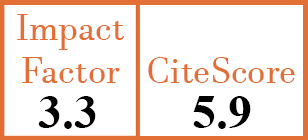One year in review
Pathogenesis of rheumatoid arthritis: one year in review 2025
G. Noto1, F. Salvetti2, A. Demaj3, P. Altieri4, E. Chericoni5, E. Ferrigno6, A. Alunno7, I. Puxeddu8
- Immuno-Allergology Unit, Department of Clinical and Experimental Medicine, University of Pisa, Italy.
- Immuno-Allergology Unit, Department of Clinical and Experimental Medicine, University of Pisa, Italy.
- Immuno-Allergology Unit, Department of Clinical and Experimental Medicine, University of Pisa, Italy.
- Department of Life, Health and Environmental Sciences, University of L'Aquila; Division of Internal Medicine and Nephrology, ASL 1 Avezzano-Sulmona-L'Aquila, San Salvatore Hospital, L'Aquila, Italy.
- Immuno-Allergology Unit, Department of Clinical and Experimental Medicine, University of Pisa, Italy.
- Immuno-Allergology Unit, Department of Clinical and Experimental Medicine, University of Pisa, Italy.
- Department of Life, Health and Environmental Sciences, University of L'Aquila; Division of Internal Medicine and Nephrology, ASL 1 Avezzano-Sulmona-L'Aquila, San Salvatore Hospital, L'Aquila, Italy.
- Immuno-Allergology Unit, Department of Clinical and Experimental Medicine, University of Pisa, Italy. ilaria.puxeddu@unipi.it
CER19266
2025 Vol.43, N°9
PI 1533, PF 1540
One year in review
Free to view
(click on article PDF icon to read the article)
PMID: 40977292 [PubMed]
Received: 31/08/2025
Accepted : 10/09/2025
In Press: 18/09/2025
Published: 18/09/2025
Abstract
Rheumatoid arthritis (RA) is a chronic inflammatory autoimmune disease characterised by joint destruction and extra-articular manifestations. A close interaction between both innate and adaptive immune systems leads to the development of the clinical features of the disease, characterised by inflammation and structural changes. Progress in the basic and clinical research in the field of RA has improved the current knowledge on the mechanisms underlying its pathogenesis. The data obtained from basic and clinical studies in RA has actively contributed to identifying new potential targets for novel therapeutic approaches to design personalised therapy of the disease.


